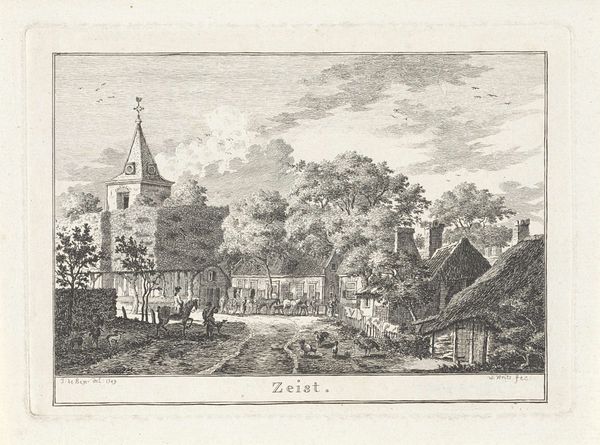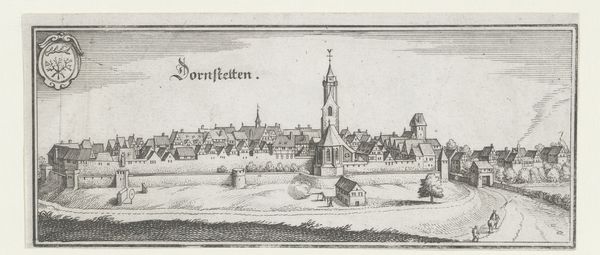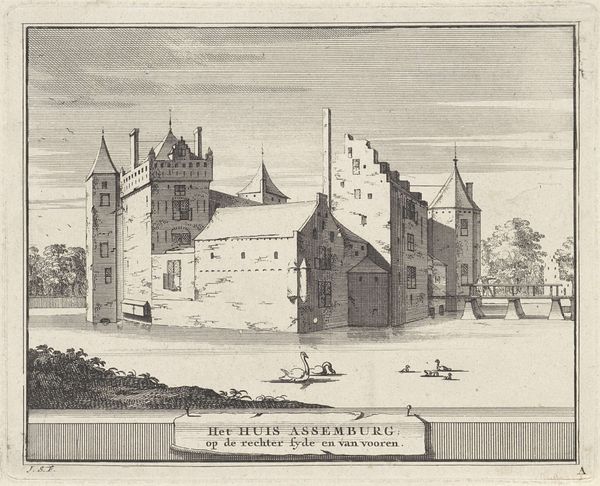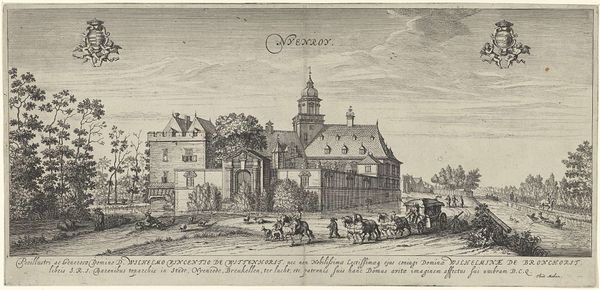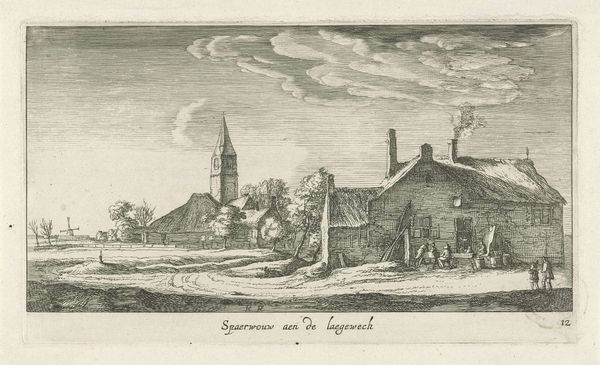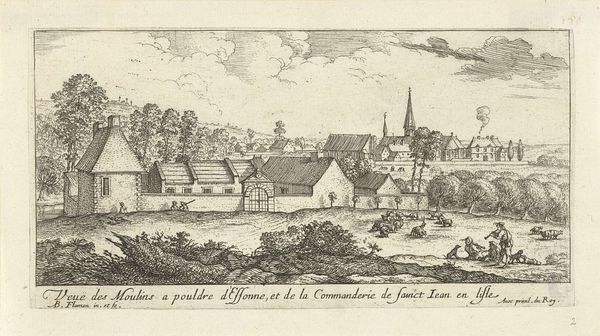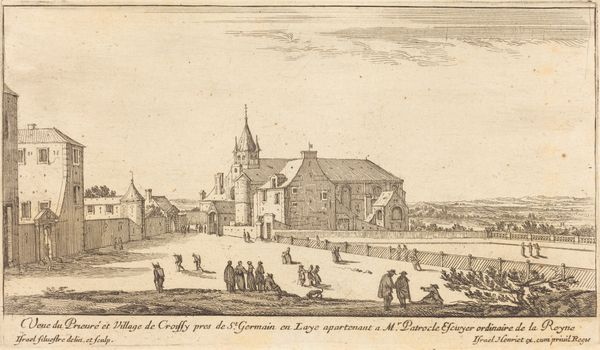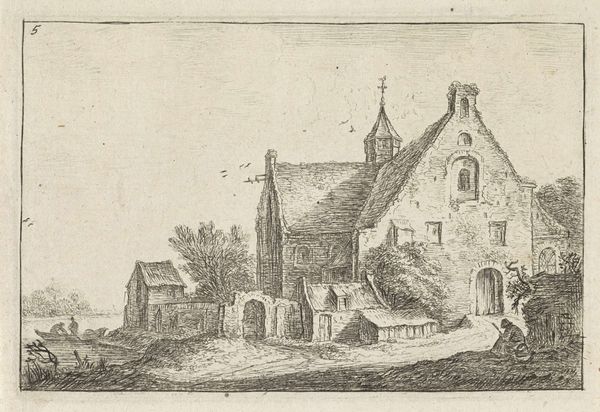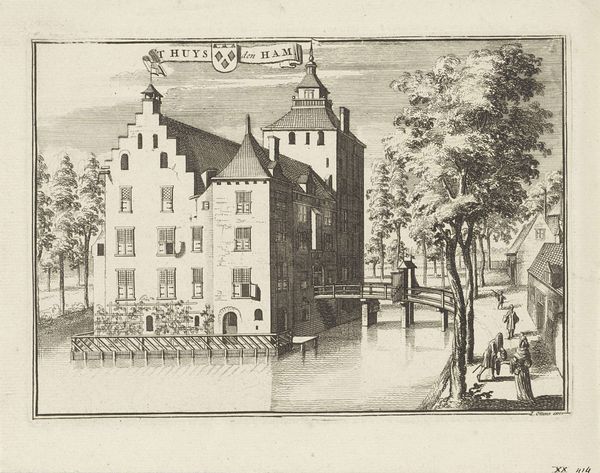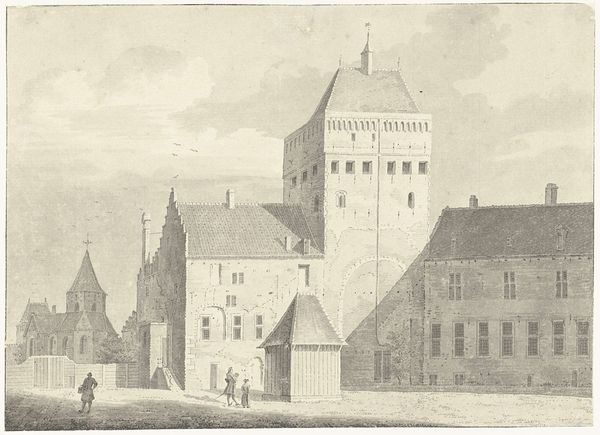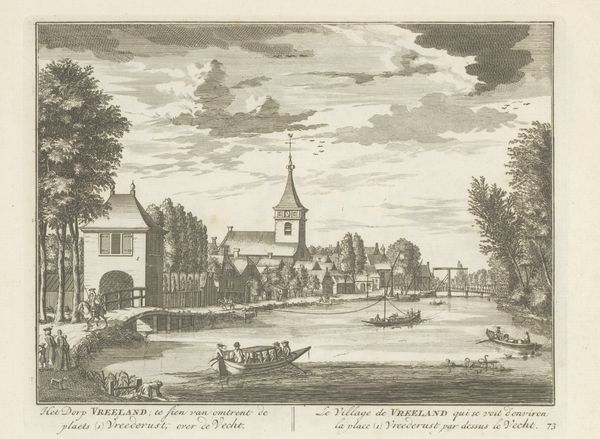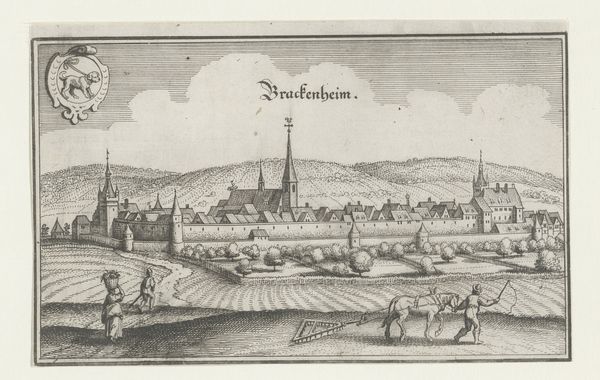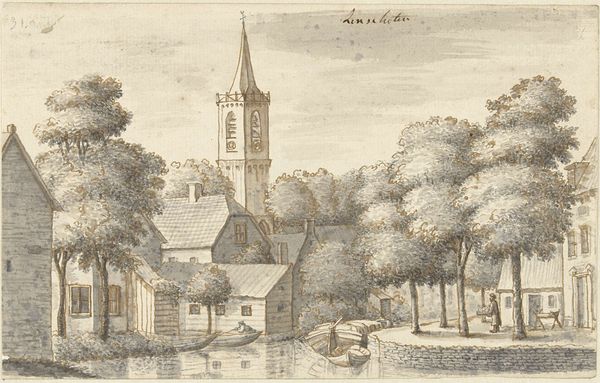
print, engraving
#
baroque
# print
#
landscape
#
cityscape
#
engraving
Dimensions: height 76 mm, width 150 mm
Copyright: Rijks Museum: Open Domain
Editor: Here we have "Gezicht op Dornhan," a cityscape etching by Matthäus Merian, created sometime between 1643 and 1690. The meticulous detail in this print is amazing, but it has a slightly detached, almost dreamlike quality. What symbols or deeper meanings might you draw from it? Curator: Look at the positioning of the town within the landscape. There's a clear visual hierarchy; the settlement sits nestled within the embrace of the natural world, specifically a forest, connoting the interplay of protection and dominion. How does the cityscape interact with the viewer's emotional understanding of place? Editor: So, the forest symbolizes not just the physical world, but maybe also a sense of security, or even constraint? The town seems very compact, almost defensive. Curator: Precisely! The rooster, prominently displayed in the upper right corner, is particularly interesting, isn't it? Its cultural meaning has shifted greatly over the centuries; historically linked with vigilance, rebirth, and even aggression, think about how it might have functioned within the collective psyche of 17th century Dornhan? Editor: Interesting... was it perhaps acting as a symbol for their local pride? Something that united the community within? Curator: Exactly, such symbols connect viewers across generations through a shared cultural memory, but their precise meanings require a deeper dive. Even a seemingly simple city view such as this encapsulates the historical values and communal identity of its time. Editor: This really makes you appreciate the layers of information within seemingly straightforward artworks. It definitely challenges how I initially interpreted this landscape. Curator: Indeed, symbols whisper stories, revealing cultural and personal narratives embedded within the visual fabric of the world.
Comments
No comments
Be the first to comment and join the conversation on the ultimate creative platform.
